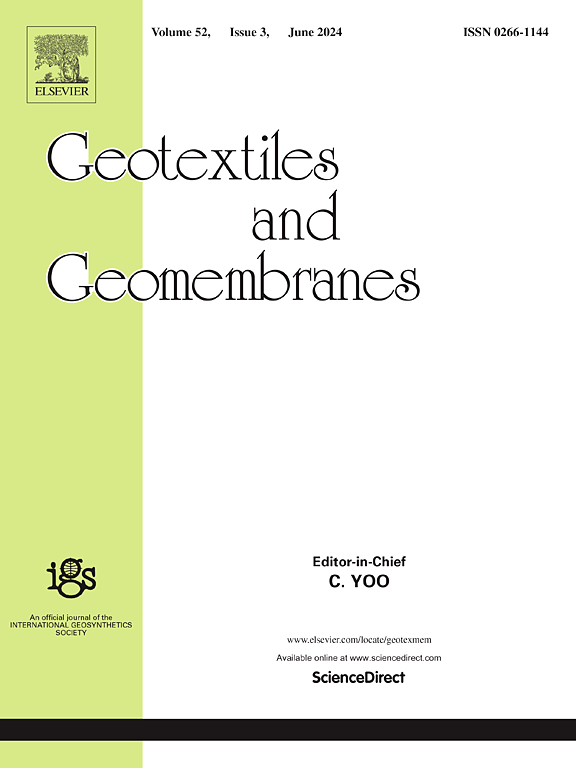Stress-strain responses of EPS geofoam upon cyclic simple shearing: Experimental investigations and constitutive modeling
IF 6.2
1区 工程技术
Q1 ENGINEERING, GEOLOGICAL
引用次数: 0
Abstract
This paper investigates the cyclic simple shearing behaviors of Expanded Polystyrene (EPS) geofoams considering influences of the shear strain amplitude (γa), number of shear cycles, shear rate, vertical stress (σn), and EPS density (ρEPS). The experimental results demonstrate that the cyclic shear stress (τ)-shear strain (γ) relationships of EPS are not sensitive to the shear rate. As the γ exceeds 2%, the EPS yields and its τ-γ relationships and backbone curve become nonlinear. There are linear relationships between the elastic modulus E, elastic shear modulus Ge, and plastic shear modulus Gp. They increase linearly with an increase in the ρEPS. The Ge and Gp are not sensitive to the γa. The cyclic shear stiffness G increases while the equivalent damping ratio D of EPS decreases with an increase in the σn and ρEPS. The G decreases while the D increases nonlinearly as the γa increases. Empirical models were developed to describe the variations of the Ge, Gp, G, and D with σn, ρEPS, and γa. A modified Hardin-Drnevich model was proposed to describe the backbone curves and τ-γ loops upon cyclic simple shearing, which has achieved good agreement with the experimental measurements and the testing results from the literature.
EPS 土工泡沫在循环简单剪切时的应力-应变响应:实验研究和构成模型
本文研究了发泡聚苯乙烯(EPS)土工膜的循环简单剪切行为,考虑了剪切应变振幅(γa)、剪切循环次数、剪切速率、垂直应力(σn)和 EPS 密度(ρEPS)的影响。实验结果表明,EPS 的循环剪切应力(τ)-剪切应变(γ)关系对剪切速率并不敏感。当 γ 超过 2% 时,EPS 就会屈服,其 τ-γ 关系和骨干曲线会变得非线性。弹性模量 E、弹性剪切模量 Ge 和塑性剪切模量 Gp 之间存在线性关系。它们随着 ρEPS 的增加而线性增加。Ge 和 Gp 对 γa 不敏感。循环剪切刚度 G 随 σn 和 ρEPS 的增加而增加,而 EPS 的等效阻尼比 D 则随 σn 和 ρEPS 的增加而减小。随着 γa 的增大,G 会减小,而 D 会非线性增大。建立了经验模型来描述 Ge、Gp、G 和 D 随 σn、ρEPS 和 γa 的变化。提出了一个改进的 Hardin-Drnevich 模型来描述循环简单剪切时的骨架曲线和 τ-γ 循环,该模型与实验测量结果和文献测试结果具有良好的一致性。
本文章由计算机程序翻译,如有差异,请以英文原文为准。
求助全文
约1分钟内获得全文
求助全文
来源期刊

Geotextiles and Geomembranes
地学-地球科学综合
CiteScore
9.50
自引率
21.20%
发文量
111
审稿时长
59 days
期刊介绍:
The range of products and their applications has expanded rapidly over the last decade with geotextiles and geomembranes being specified world wide. This rapid growth is paralleled by a virtual explosion of technology. Current reference books and even manufacturers' sponsored publications tend to date very quickly and the need for a vehicle to bring together and discuss the growing body of technology now available has become evident.
Geotextiles and Geomembranes fills this need and provides a forum for the dissemination of information amongst research workers, designers, users and manufacturers. By providing a growing fund of information the journal increases general awareness, prompts further research and assists in the establishment of international codes and regulations.
 求助内容:
求助内容: 应助结果提醒方式:
应助结果提醒方式:


